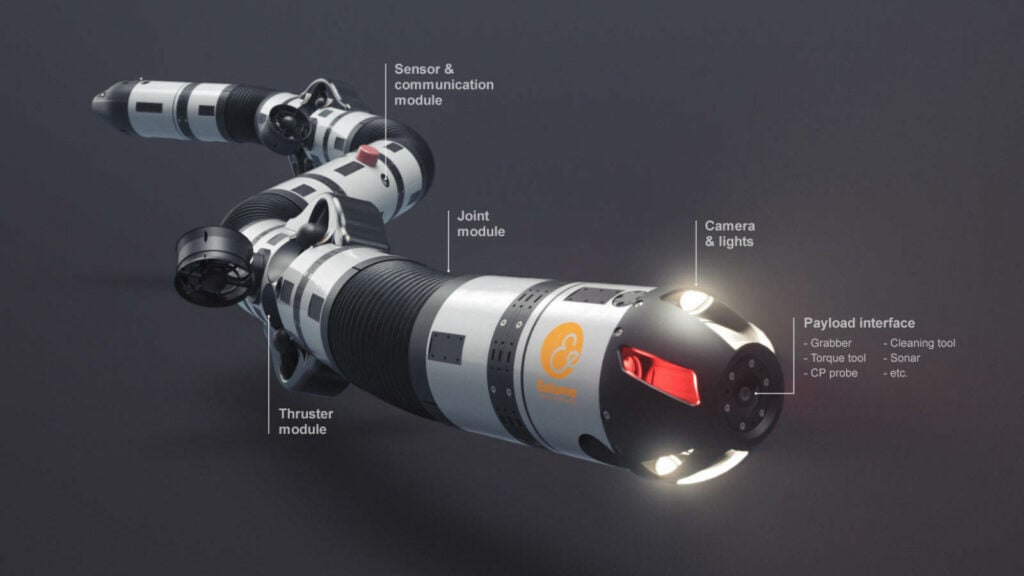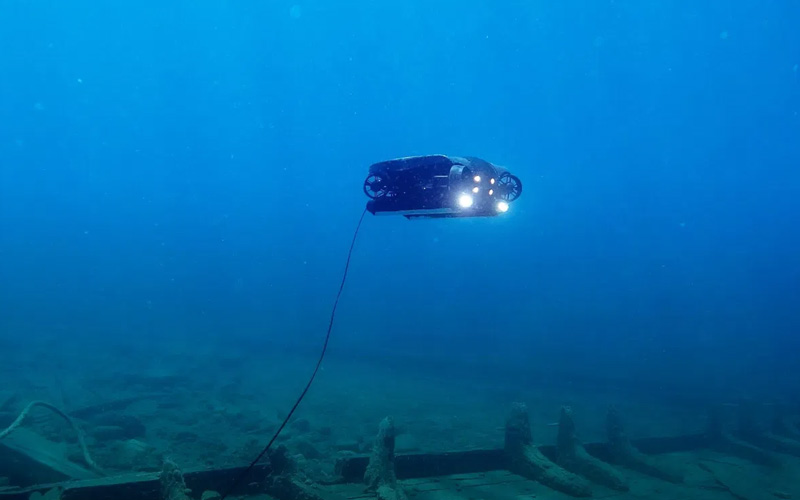Table of Contents
Robotic Underwater Inspection In adverse conditions, it is essential to carry out repairs on equipment when it is very difficult for us to carry them out in inaccessible areas, even more so when they are under water, as in the case, for example, of underwater pipelines that supply a product derived from petroleum or crude oil. , repairing them has always been a big problem.
It is important to stress the importance of inspections . These are essential to guarantee the quality and safety of products, equipment and systems. Inspections help detect problems and defects before they become catastrophic failures, which can have serious consequences for the health and safety of people. Additionally, inspections are also crucial to maintaining the quality and reliability of equipment and systems over time.
For some years, attempts have been made to improve and innovate related to underwater inspections in order to guarantee that the asset under the sea can be preserved and have a follow-up and control of its useful life to avoid repairs and spills that result in environmental contamination and the penalization of the companies responsible for such a disaster.
Main technological advances in robotic underwater inspection
In this sense, a true revolution has been experienced in recent years thanks to technology and innovation. Today, they are not only performed more accurately and quickly, but they have also become more efficient and safer.
Until now, underwater inspection and maintenance was carried out with vehicles suitable for that environment and with the support of surface vessels. But now there is a robot that changes everything. It is called Eelume and it was made in Norway. It is a new type of underwater intervention vehicle with a snake-shaped body, combined with underwater thrusters that makes the robot unique, flexible and agile.

For complex manipulation it narrows like a torpedo; for long distance cruising it is lean and agile; for precision hovering, and moving in events of strong ocean currents, with a confined space operation no other vehicle could achieve sneaking around obstacles in narrow openings, shifting into a U-shaped double-arm configuration ”. It has sensors and a camera at each end to be able to work at the bottom of the sea.
The configuration of the arm to deal with intricate tasks is very practical because the vehicle is modular, that is, it can change the combinations of joints, propellers and payloads, it can mount different types of equipment and clamps of the various maintenance tools.
The chambers are long, while the flexible body gives the operator free ground for inspection and intervention. The best thing about the Ellume is that it is designed to operate permanently underwater with 24/7 security, although it is recommended that it last only 6 months to carry out preventive maintenance.
In turn, it can travel 20 km before returning to its station for recharging. This means less use of expensive surface vessels and greener, safer execution of your repair interventions.
Inspired by sea snakes, and analyzing the mathematical model with the movement and speed of natural snakes, the scientists looked for a way to imitate these movements and programmed the prototype snake robots to understand that language. The first robot was ANACONDA. This was the first hydraulic water serpent; but there was a problem in the displacement in the undulations and it was friction. For this friction, nature endowed sea serpents with scales so that, in their advance, the undulations can give them greater momentum and speed.
“Eel” means eel in English and it is the new model after many prototypes and experiments. It was designed to carry out small maintenance needs and minimal operations such as visual inspections, cleaning and valve adjustment.
It is important to highlight that these robots are now being considered to improve them in a second stage, where the inspection can in turn be complemented with the repair at the time of any eventuality or failure.
For example, doing some repair welding or union of pipe joints and its subsequent quality assurance with digital radiography. At the moment, engineers from the Norwegian University of Science and Kongsberg Maritime and Statoil created this flexible snake to reach areas that are very difficult for humans or Remotely Operated Vehicles (ROVs) to access.
Another innovation in underwater inspection robotics is the launch of a GE underwater inspection robot to remotely inspect hydro turbines. GE’s Hydro Solutions Chief Engineer David Auger-Habel describes his experience piloting the ROV and guiding the inspection camera between the blades of the turbine runner, all from his laptop.

This technological advance is innovative in the field of underwater inspections, since it allows engineers to inspect the hydromechanical system in a safer, more efficient and precise way without the need to physically submerge in the water. In addition, the use of state-of-the-art technology allows for faster and more detailed inspection, which can reduce maintenance costs and increase the useful life of turbines.
Despite the benefits, there are still challenges to be faced in the future. Underwater inspection technology is rapidly evolving and can be expensive for some companies. Implementing these technologies requires proper training and effective data management to ensure they are used optimally and benefits are maximized. Still, underwater inspection innovation holds promise and can have a significant impact on the efficiency and safety of the hydraulics industry.
In 2021, ORCA Hub, secured £2.5 million ($3.48 million) of additional funding from UK Research & Innovation to support the development of robots for the offshore energy industry.
The objective of ORCAHub (Offshore Robotics for Certification of Assets) is to “help the offshore energy sector use robots to safely inspect, maintain and repair platforms, turbines wind farms and other infrastructure, guided by humans on ships or on land”.
The funding was used to develop six demonstration projects with industrial partners, including the inspection of wind turbine foundations and the deployment of Industrial Internet of Things (IIoT) sensors.
The remaining £1.9m funded the expansion of ORCA Hub activities to see if the technologies and processes developed by the Edinburgh-based center could be used in sectors from construction and urban infrastructure to decommissioning and waste management.
Definitely, every day we are making the world more dynamic and facilitating the work of inspections for the improvement, preservation, maintenance and quality of operation of assets. The long-term vision of the Oil & Gas industry is to achieve a fully digitized offshore energy field, with operations, inspections and maintenance carried out from shore through the use of robots, digital architectures and cloud-based processes. , in order to materialize this vision.

